12 Books Every Experienced and New Therapist Need to Read [2023]
Last Updated on May 9, 2023
Books for Therapists should not be limited to the required material and textbooks assigned during college and specialization courses. While these Books for Therapists help medical and psychology students obtain the foundations of counseling and therapy, professionals should commit to lifetime learning by improving their knowledge in the field through continuing education.
Hence, this blog post aims to provide an extensive reading list that includes 12 of the best books for therapists (and 16 books for further recommendations) to help novice therapists develop their expertise and expand their techniques. Furthermore, these books for therapists will also be helpful for experienced counselors to refresh their field information and replenish their therapy methods with upcoming experiences.

1. Emotional Intelligence: Why It Can Matter More Than IQ – Daniel Goleman
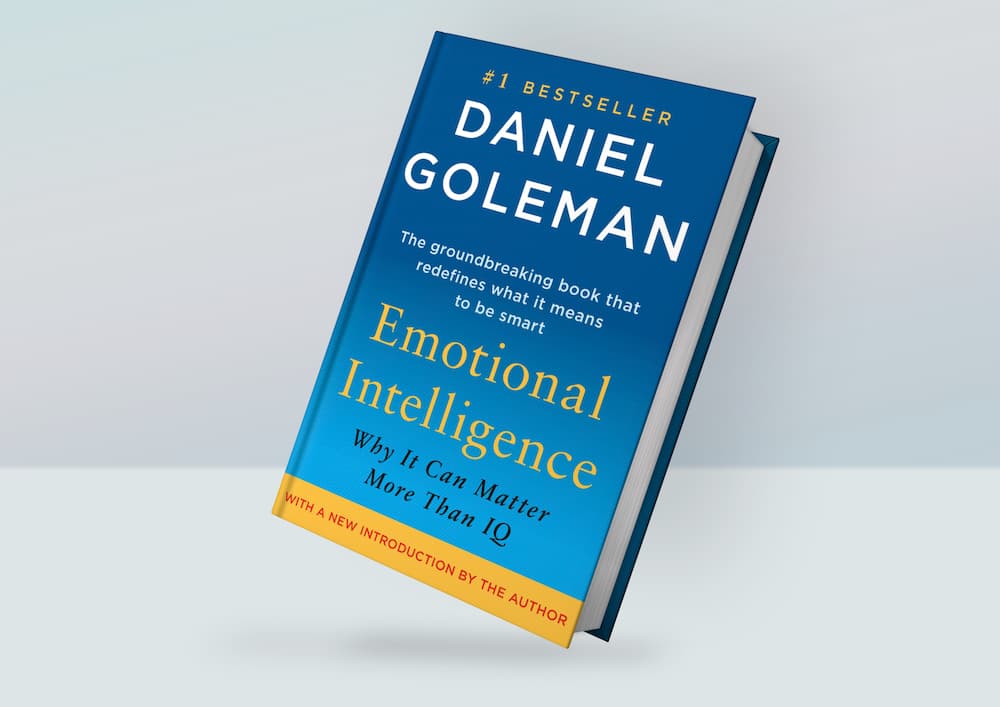
Title: Emotional Intelligence: Why It Can Matter More Than IQ
Author: Daniel Goleman
Publication Date: 1995
Genre: Non-fiction, Psychology, Self-help
Daniel Goleman obtained his Ph. D. from Harvard University and worked for the New York Times for more than a decade by reporting on behavioral sciences.
He made a groundbreaking contribution to the brain sciences and psychotherapy with his books for therapists, including his masterpiece Emotional Intelligence: Why It Can Matter More Than IQ, dedicated to the extensive study and explanation of Emotional Intelligence. The book explores the concept of emotional intelligence (EI) and its significant impact on various aspects of life, such as personal and professional success, mental health, and relationships. Goleman argues that emotional intelligence is as important, if not more so, than traditional intelligence quotient (IQ) in determining one’s overall well-being and success. This famous work of his presents a brilliant insight into the role of EQ in IQ, thereby paving a new path for therapists to help their clients.
In the book, Goleman presents a framework for understanding emotional intelligence that consists of five key components:
- Self-awareness: The ability to recognize and understand one’s own emotions, motivations, and the impact they have on oneself and others.
- Self-regulation: The capacity to manage and control one’s emotions, especially in stressful situations, and to adapt to change effectively.
- Motivation: The drive to achieve personal and professional goals, even in the face of adversity or setbacks.
- Empathy: The ability to understand and share the feelings of others, to show compassion, and to respond appropriately to the emotional needs of others.
- Social skills: The ability to build and maintain healthy relationships, communicate effectively, work collaboratively, and navigate social situations with ease.
Goleman supports his arguments with a range of scientific research, case studies, and real-life examples. He explains how emotional intelligence can be cultivated and developed, emphasizing that EI is not a fixed trait but rather a set of skills that can be learned and improved over time. The book also discusses the implications of emotional intelligence in various aspects of life, such as parenting, education, leadership, and workplace dynamics.
“Emotional Intelligence: Why It Can Matter More Than IQ” has had a significant impact on the fields of psychology, education, and business, as it has challenged the traditional notion of intelligence and success. It has also popularized the concept of emotional intelligence and led to further research and development of EI-related theories and assessments.
The book is an engaging and thought-provoking read for anyone interested in understanding the role of emotions in human behavior and the importance of cultivating emotional intelligence for personal growth, mental health, and overall success.
In this video, Daniel Goleman introduces Emotional Intelligence
See the book on Amazon.
2. A Guide to Possibility Land: Fifty-One Methods for Doing Brief, Respectful Therapy – Bill O’Hanlon and Sandy Beadle

Title: A Guide to Possibility Land: Fifty-One Methods for Doing Brief, Respectful Therapy
Authors: Bill O’Hanlon and Sandy Beadle
Publication Date: 1997
Genre: Non-fiction, Psychology, Psychotherapy
Co-authored by Bill O’Hanlon, the creator of the possible therapy, and Sandy Beadle, this one of the books for therapists gathers various general solutions which can be easily modified for the differing needs of the clients. It is published in 1997. The book is a practical guide that offers therapists and counselors an array of methods and techniques for conducting effective, brief, and respectful therapy sessions. Drawing on their extensive experience in the field of psychotherapy, the authors present innovative approaches that help clients achieve positive change in a relatively short period of time.
Mainly designed as one of the good books for therapists, A Guide to Possibility Land will provide a large pool of executable tools which enable clients to explore the experiences, ideas, and possibilities in their lives and reach suitable solutions for their needs. All the methods, including obtaining social support or reframing, are described, explained, and exemplified in two or three pages.
The book is structured in a clear and concise manner, with each of the fifty-one methods presented in its own separate chapter. This format allows readers to easily navigate and reference the different techniques as needed. The methods outlined in the book are grounded in a solution-focused and strengths-based perspective, emphasizing the importance of working collaboratively with clients to identify and utilize their existing resources and capacities for change.
Some of the key concepts and techniques covered in “A Guide to Possibility Land” include:
- Language and reframing: The authors explore the power of language in shaping clients’ experiences and perceptions of their problems. They emphasize the importance of helping clients reframe their narratives in more empowering and solution-oriented ways.
- Empowering questions: O’Hanlon and Beadle highlight the value of asking open-ended, curiosity-driven questions that encourage clients to explore their own resources, strengths, and solutions.
- Scaling techniques: The book introduces methods for assessing and measuring clients’ progress by using scales and other visual tools, which can help clients recognize and celebrate their achievements.
- Externalizing the problem: The authors discuss techniques that help clients separate themselves from their problems, allowing them to see issues as challenges to overcome rather than inherent parts of their identity.
- Utilizing client resources: O’Hanlon and Beadle emphasize the importance of recognizing and building upon clients’ existing strengths, skills, and resources to facilitate change and foster a sense of empowerment.
- Encouraging action and experimentation: The book presents various methods for supporting clients in taking small, manageable steps towards their goals, allowing them to test out new behaviors and approaches in their lives.
“A Guide to Possibility Land” is a valuable resource for therapists, counselors, social workers, and other mental health professionals who are interested in incorporating brief, solution-focused techniques into their practice. The book offers a wealth of practical tools and strategies that can be easily integrated into various therapeutic settings and adapted to meet the unique needs and goals of individual clients.
In this video, licensed marriage and family therapist Lisa Mustard talks with Bill O’Hanlon about the book.
See the book on Amazon.
3. Games People Play: The Basic Handbook of Transactional Analysis – Eric Berne
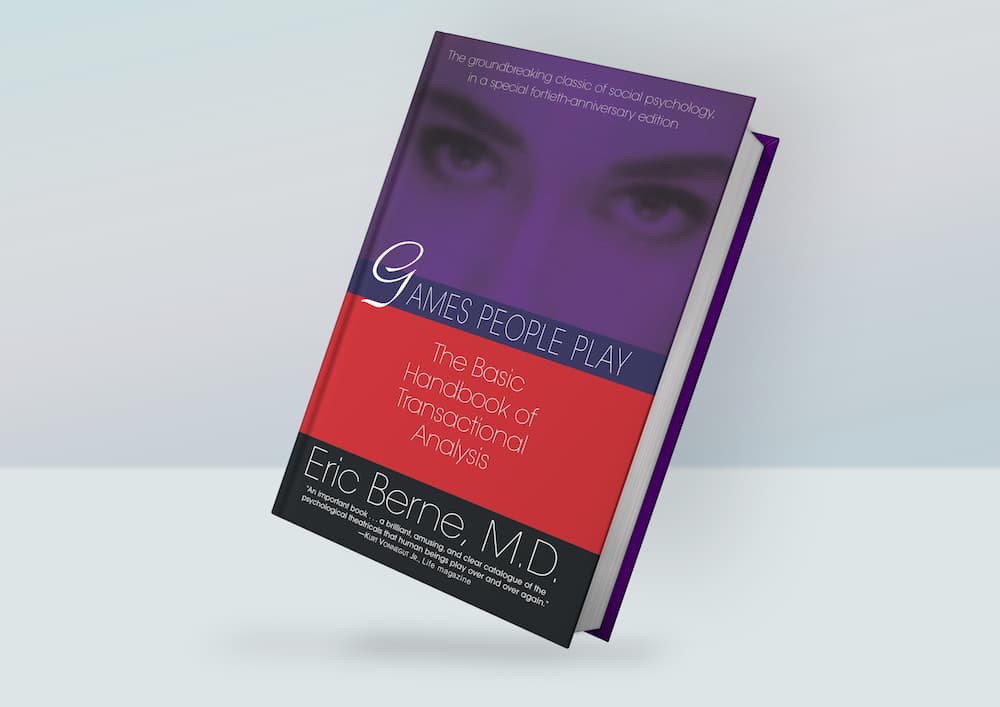
Title: Games People Play: The Basic Handbook of Transactional Analysis
Author: Eric Berne
Publication Date: 1964
Genre: Non-fiction, Psychology, Psychotherapy
“Games People Play: The Basic Handbook of Transactional Analysis” is a groundbreaking book written by psychiatrist Eric Berne, and published in 1964. The book introduces the theory of transactional analysis (TA), a psychoanalytic and social psychology approach that seeks to understand human behavior and communication patterns through the analysis of social transactions between individuals. This one of the books for therapists by Eric Berne presents a Freudian attitude towards personal ties. Berne’s work has had a significant impact on the field of psychotherapy and has made transactional analysis a widely recognized and influential approach.
The book is divided into two main parts. The first part presents the foundational concepts and principles of transactional analysis, while the second part focuses on the various “games” that people play in their interpersonal relationships. These games are unconscious, manipulative, and often self-defeating patterns of behavior that individuals engage in to meet their psychological needs and avoid taking responsibility for their actions.
Some key concepts and principles of transactional analysis introduced in the book include:
- Ego states: Berne posits that individuals have three distinct ego states – Parent, Adult, and Child – which determine their behaviors, thoughts, and feelings in different situations. These ego states can be accessed and observed in social transactions.
- Transactions: Social interactions between individuals are referred to as transactions. Berne explains that transactions can be complementary (when ego states align) or crossed (when ego states do not align), which can lead to misunderstandings or conflicts.
- Strokes: In transactional analysis, strokes are units of recognition or attention that individuals exchange during social transactions. People often engage in games to receive strokes, which meet their psychological needs for validation, acceptance, and intimacy.
- Life positions: Berne describes four life positions that individuals can adopt, which influence their outlook on life and interpersonal relationships. These positions are “I’m OK, You’re OK,” “I’m OK, You’re not OK,” “I’m not OK, You’re OK,” and “I’m not OK, You’re not OK.”
- Scripts: According to Berne, individuals develop life scripts, which are unconscious life plans based on early childhood experiences and parental messages. These scripts shape an individual’s behavior, relationships, and life choices.
In the second part of the book, Berne describes various “games” that people play in their interpersonal relationships. Some examples of these games include “Why Don’t You, Yes But,” “If It Weren’t For You,” “Now I’ve Got You, You Son of a Bitch,” and “Let’s You and Him Fight.” Berne explains the motivations, dynamics, and consequences of each game, helping readers recognize and understand these patterns in their own lives.
“Games People Play” remains a classic and influential book in the field of psychotherapy and psychology. It offers valuable insights into human behavior, communication patterns, and the unconscious motives that drive our actions. The book is an essential read for anyone interested in understanding the dynamics of interpersonal relationships and the impact of early life experiences on adult behavior.
In this video, Dr. Berne explains the theory behind Transactional Analysis.
See the book on Amazon.
4. The Making of a Therapist: A Practical Guide for the Inner Journey – Louis Cozolino
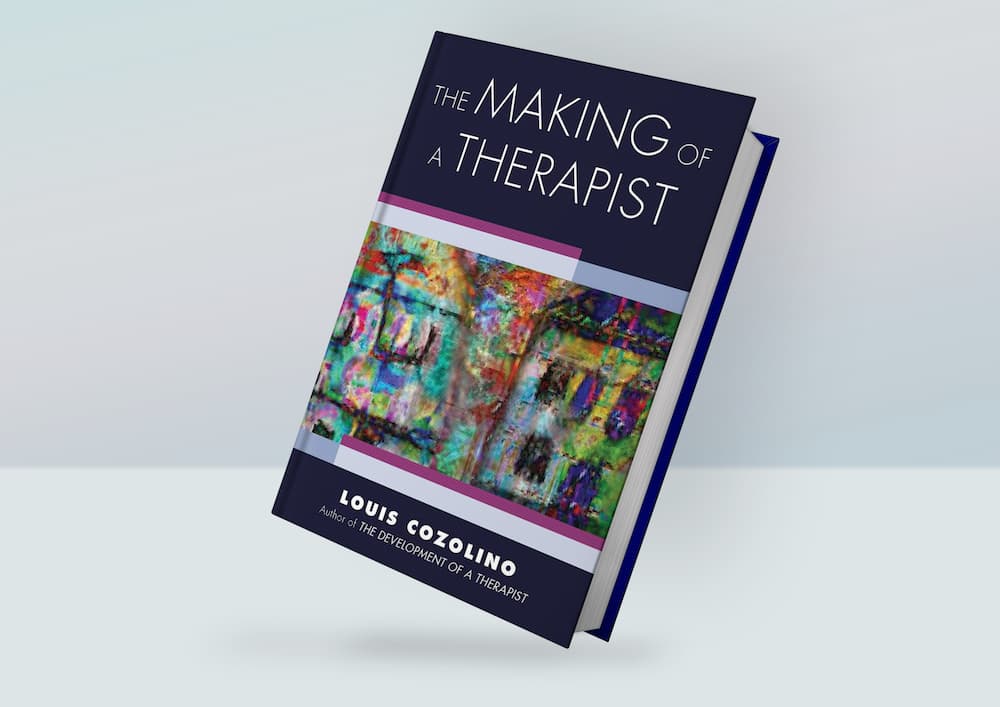
Title: The Making of a Therapist: A Practical Guide for the Inner Journey
Author: Louis Cozolino
Publication Date: 2004
Genre: Non-fiction, Psychology, Psychotherapy
“The Making of a Therapist: A Practical Guide for the Inner Journey” is a book written by Dr. Louis Cozolino, an experienced psychotherapist, professor of psychology, and prolific author in neuroscience. The book is designed to help aspiring therapists navigate the challenges and complexities of the therapeutic process, providing practical guidance, insights, and wisdom gleaned from Cozolino’s years of clinical practice and teaching. While the therapist candidates are exposed to an extensive curriculum and books for therapists in psychology and neuro-science during their education at the university, the real-life experience that awaits them after graduation is not a part of this curriculum.
This one of the books for therapists can be cited as one of the best books for beginning therapists as it describes the experience of Cozolino starting from his first days of therapy and presents the skills, methods, and strategies he acquired to cope with the varying needs and reactions of the clients.
The book is divided into three main sections:
- Getting Through Your First Sessions: In this section, Cozolino addresses the initial fears, anxieties, and uncertainties that new therapists often face when beginning their practice. He offers guidance on building rapport with clients, establishing a therapeutic alliance, and developing effective listening and communication skills. Cozolino also emphasizes the importance of self-reflection and self-awareness, encouraging therapists to examine their own beliefs, values, and emotional reactions in order to become more effective practitioners.
- Getting to Know Your Clients: This section focuses on the process of understanding and empathizing with clients, helping therapists to see the world through their clients’ eyes and to appreciate the complexity of their emotional experiences. Cozolino discusses various approaches to assessment, diagnosis, and treatment planning, highlighting the importance of flexibility, curiosity, and humility in the therapeutic process. He also explores the role of transference and countertransference, encouraging therapists to recognize and manage these dynamics in their work with clients.
- Deepening Your Clinical Work: In the final section of the book, Cozolino addresses more advanced therapeutic skills and strategies, such as working with resistance, navigating challenging emotions, and facilitating change and growth in clients. He also discusses the importance of self-care and maintaining a healthy work-life balance, providing advice on managing stress, burnout, and compassion fatigue.
Throughout the book, Cozolino shares personal anecdotes, case examples, and practical exercises, making the material engaging and accessible for readers. He also emphasizes the importance of the therapeutic relationship, suggesting that it is the key to successful therapy and that the personal and professional growth of the therapist is an essential component of this process.
“The Making of a Therapist” is a valuable resource for both new and experienced therapists, offering a unique combination of practical guidance, psychological theory, and personal insights. The book encourages readers to embark on their own inner journey, cultivating self-awareness, empathy, and resilience as they develop their skills and confidence as therapists.
In this video, Dr. Louis Cozolino introduces the “The Making of a Therapist”.
See the book on Amazon.
5. First Steps in Counseling – Pete Sanders, Paula J. Williams, Andy Rogers
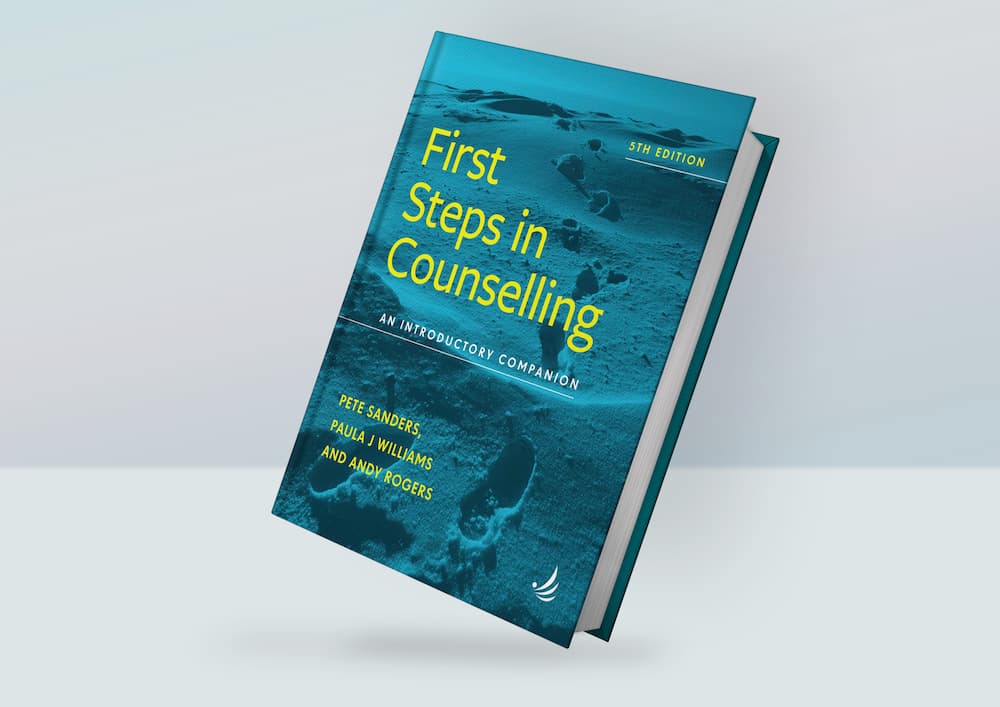
Title: First Steps in Counseling: A Students’ Companion for Introductory Courses
Authors: Pete Sanders, Paula J. Williams, Andy Rogers
Publication Date: 1995 (First Edition)
Genre: Non-fiction, Psychology, Counseling
“First Steps in Counseling: A Students’ Companion for Introductory Courses” is a practical guide and must-read book for therapists written by Pete Sanders, Paula J. Williams, and Andy Rogers. The book is designed for students and beginners in the field of counseling, providing essential information, guidance, and support to help them navigate the early stages of their counseling journey.
This one of the books for therapists concentrates on the basics of “helping someone” and, therefore, attains to provide extensive coverage to the counseling basics such as its meaning and scope, the theories behind it, its application for the clinical cases as well as its place in the culture and other fields of life.
Hence, this book is among the best books for therapists and therapy students, beginning counselors, experts who want to refresh their knowledge, and even for the common people who want to have a deeper insight into counseling to apply it in their relations.
The book covers a range of topics, including:
- An introduction to counseling: Sanders provides an overview of the field of counseling, its history, and the various theoretical approaches that have shaped it. He discusses the role of the counselor and the key principles and ethical considerations that underpin effective counseling practice.
- Core counseling skills: The book explores the fundamental skills and techniques that counselors need to develop, such as active listening, empathy, and building rapport with clients. Sanders offers practical advice and exercises to help students practice and refine these skills.
- The counseling process: Sanders guides readers through the various stages of the counseling process, from the initial assessment and goal-setting to the ongoing therapeutic relationship and the eventual ending of counseling. He also addresses common challenges and dilemmas that may arise during counseling sessions.
- Personal and professional development: The book emphasizes the importance of self-awareness, self-reflection, and ongoing learning for counselors. Sanders encourages students to explore their own values, beliefs, and emotional reactions and to seek opportunities for professional development through further training, supervision, and networking.
- Practical considerations: Sanders provides practical advice on topics such as setting up a counseling practice, working within different counseling settings, and adhering to ethical guidelines and professional standards.
Throughout the book, Sanders adopts a clear, accessible writing style, making the material easy to understand for readers who may be new to the field of counseling. The book also includes case examples, exercises, and reflective questions to help students engage with the material and apply their learning to real-world counseling situations.
“First Steps in Counseling” serves as a comprehensive introduction to the world of counseling, offering a valuable resource for students, trainee counselors, and anyone interested in learning more about the principles and practices of counseling.
See the book on Amazon.
6. The Gift of Therapy: An Open Letter to a New Generation of Therapists and Their Patients – Irvin Yalom
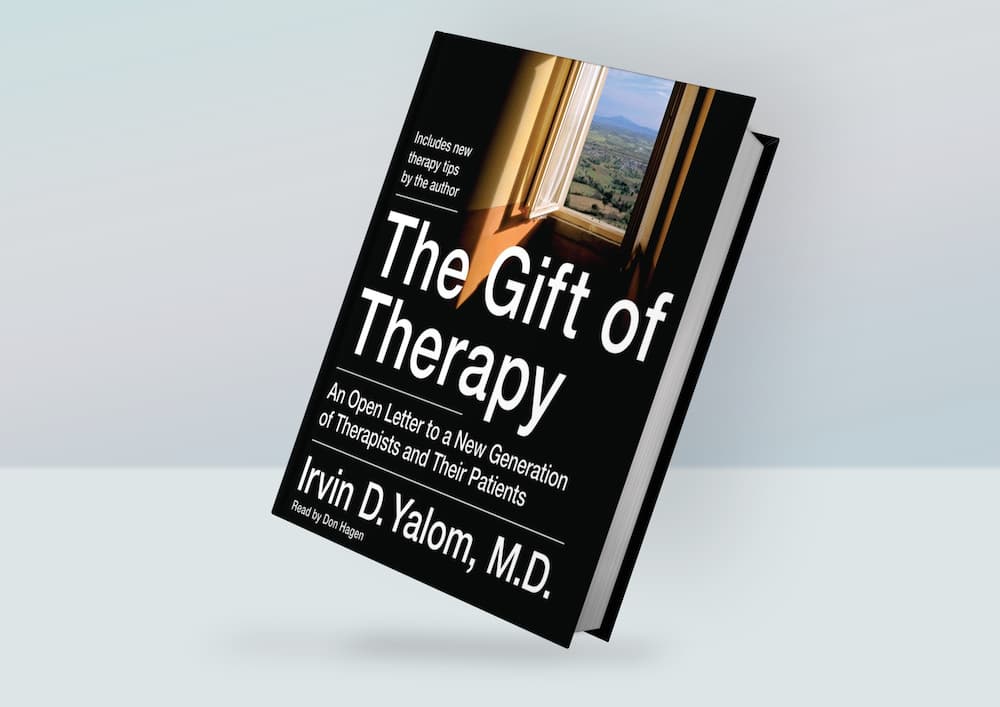
Title: The Gift of Therapy: An Open Letter to a New Generation of Therapists and Their Patients
Author: Irvin D. Yalom
Publication Date: 2002
Genre: Non-fiction, Psychology, Psychotherapy
The renowned psychotherapist and well-known author of some of the best books for therapists, Irvin D. Yalom, provides a detailed and beneficial guide for newly-graduated counselors to improve their skills for more fruitful clinical service. The book offers insights, wisdom, and practical guidance for therapists, counselors, and other mental health professionals. It also serves as a valuable resource for those interested in understanding the therapeutic process from a humanistic and existential perspective.
The book presents 85 practical and brief tips for beginner psychotherapists, which will help them improve their relations with their clients. It is written in an engaging and conversational tone, making it easy to read and digest. Yalom’s decades of experience as a therapist and his expertise in existential psychotherapy give the book a unique and insightful perspective. Structured in 2-3 pages long and easy-to-read chapters, it, as one of the best books for therapists to read, describes practical information for the counselors to address common problems that every counselor encounters during the therapeutic process.
Some key themes and concepts explored in “The Gift of Therapy” include:
- The importance of the therapeutic relationship: Yalom emphasizes the significance of the connection between the therapist and the patient, arguing that this relationship is the foundation for successful therapy. The therapist must be genuine, empathic, and fully present with the patient.
- The here and now: Yalom encourages therapists to focus on the present moment and explore what is happening in the room between the therapist and the patient. This approach allows the therapist to address any transference or countertransference issues that may arise.
- Existential concerns: Yalom highlights the importance of addressing patients’ existential issues, such as the fear of death, isolation, freedom, and meaninglessness. By helping patients confront these issues, therapists can help them find meaning and purpose in their lives.
- The use of personal experiences: Yalom advocates for therapists to share their own experiences when appropriate, as this can create a sense of connection and authenticity, and help patients feel less isolated in their struggles.
- The importance of self-care: Yalom reminds therapists of the need to take care of themselves to maintain their own mental health and well-being. This includes maintaining healthy boundaries, seeking personal therapy, and engaging in self-reflection.
Overall, “The Gift of Therapy” is a valuable resource for both new and experienced therapists, offering guidance on how to navigate the complex world of psychotherapy. It is also beneficial for individuals interested in the therapeutic process, providing an inside look at the challenges, joys, and responsibilities of working in this field.
In this video, you can see a book summary of The Gift Of Therapy by Irvin D. Yalom, M.D.
See the book on Amazon.
7 – On Becoming a Person: A Therapist’s View of Psychotherapy – Carl Rogers
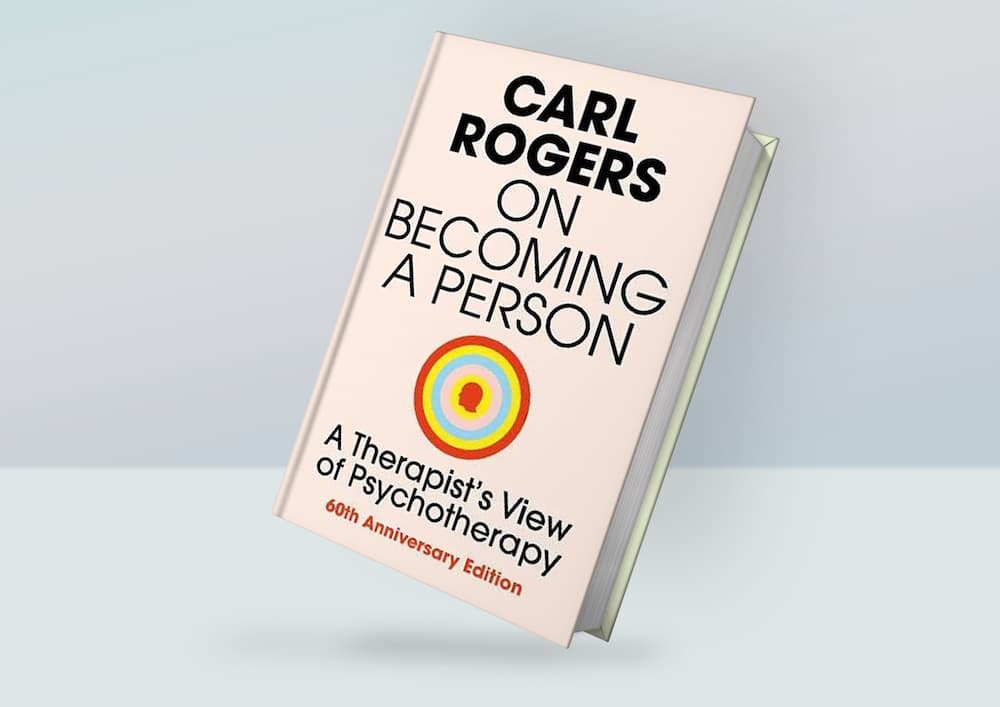
Title: On Becoming a Person: A Therapist’s View of Psychotherapy
Author: Carl Rogers
Publication Date: 1961
Genre: Non-fiction, Psychology, Psychotherapy
“On Becoming a Person: A Therapist’s View of Psychotherapy” is a seminal book written by Carl Rogers, one of the most influential psychologists of the 20th century and the founder of client-centered therapy, also known as person-centered therapy. He has authored many books and essays on the topic, which ultimately designed the framework and provided guidance for the development of this new approach. The book offers a comprehensive overview of Rogers’ therapeutic approach, presenting his theories and insights on human growth, self-actualization, and the process of psychotherapy.
As number seven on the Hypnotes Best Books for Therapists guide, this book provides a basis for Rogers’ widely appreciated psychotherapeutic insights. Focusing on the process of building a personality in an individual, this book is among the best books for therapists to develop their therapy skills with the ideas of one of the pioneers of this treatment.
Key concepts and themes explored in the book include:
- The actualizing tendency: Rogers posits that every individual has an innate drive toward self-actualization, which is the process of realizing and fulfilling one’s potential. This actualizing tendency is the foundation of his therapeutic approach, which emphasizes the importance of creating a supportive and non-judgmental environment that allows clients to explore their feelings, thoughts, and experiences freely.
- Client-centered therapy: Rogers introduces the principles and techniques of client-centered therapy, a non-directive approach to psychotherapy that emphasizes the client’s autonomy, self-determination, and innate capacity for growth and change. The therapist’s role is to provide empathy, unconditional positive regard, and congruence (genuineness) to facilitate the client’s self-exploration and self-acceptance.
- The therapeutic relationship: Rogers argues that the quality of the therapeutic relationship is the most important factor in successful therapy. He emphasizes the importance of establishing a genuine, empathic, and non-judgmental connection with the client, which creates a safe space for the client to express and explore their emotions and experiences.
- The process of change: According to Rogers, change occurs in therapy when clients are able to fully experience and accept their emotions, thoughts, and experiences without fear of judgment or rejection. This process of self-acceptance and self-discovery enables clients to develop greater self-awareness, self-esteem, and psychological flexibility, leading to lasting change and personal growth.
- Applications of client-centered therapy: Rogers explores the various applications of client-centered therapy in different settings, such as individual therapy, group therapy, family therapy, and education. He also discusses the broader implications of his approach for social change and human understanding.
“On Becoming a Person” is a foundational text in the field of humanistic psychology and has had a lasting impact on the practice of psychotherapy. The book provides a rich and insightful exploration of Rogers’ groundbreaking therapeutic approach, offering valuable insights and guidance for therapists, counselors, and anyone interested in understanding the principles of client-centered therapy and the human capacity for growth and change.
In this video, you can watch a short book summary of ”On Becoming a Person A Therapist’s View of Psychotherapy by Carl R Rogers”
See the book on Amazon
8 – Clinical Casebook of Couple Therapy – Alan S. Gurman
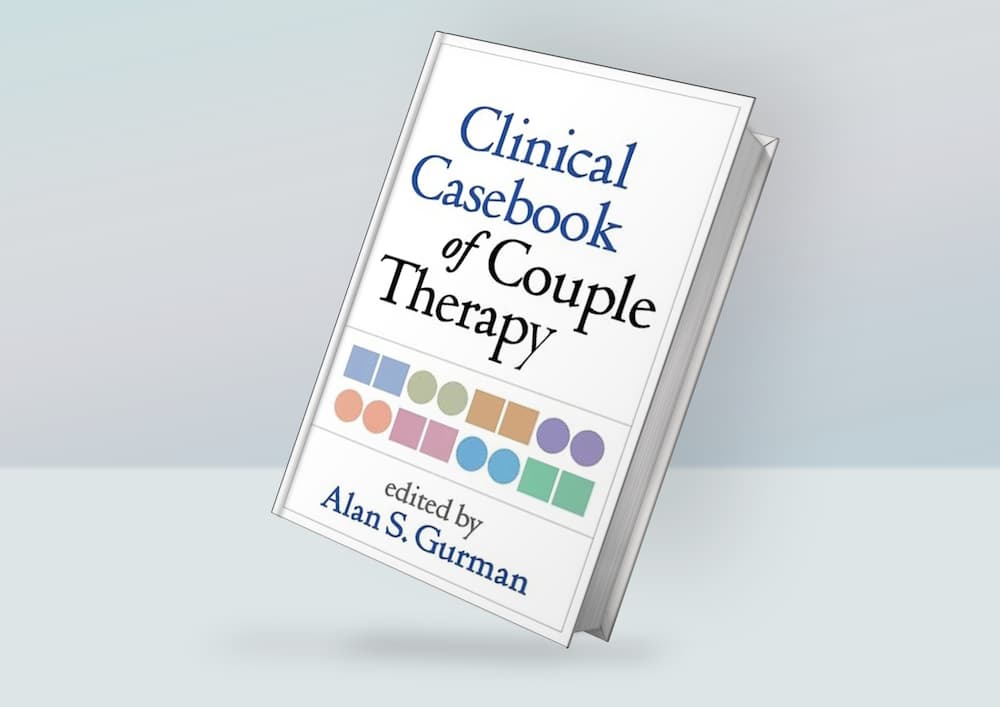
Title: Clinical Casebook of Couple Therapy
Editor: Alan S. Gurman
Publication Date: 2010
Genre: Non-fiction, Psychology, Psychotherapy, Couple Therapy
“Clinical Casebook of Couple Therapy” is an informative and comprehensive book edited by Alan S. Gurman, a renowned psychologist, and couple therapy expert. The book is an excellent resource and one of the best books for new therapists working in couples counseling, and number eight on our Hypnotes Best Books for Therapists list. It offers a collection of real-life case studies that demonstrate the application of various therapeutic approaches to working with couples. It is designed to help therapists, counselors, and students deepen their understanding of couple therapy and enhance their clinical skills.
The casebook is divided into several sections, each focusing on a different therapeutic approach to couple therapy. Some of these approaches include:
- Psychodynamic couple therapy
- Cognitive-behavioral couple therapy
- Emotionally focused couple therapy
- Integrative couple therapy
- Narrative couple therapy
- Systemic couple therapy
- Solution-focused couple therapy
- Psychoanalytic couple therapy
Each section contains multiple case studies that illustrate the key concepts, techniques, and interventions associated with the specific therapeutic approach. The case studies are contributed by experienced therapists who share their insights, reflections, and clinical decision-making processes as they work with the couples.
The case studies address a wide range of issues and challenges that couples may face, such as:
- Communication problems
- Infidelity and trust issues
- Sexual difficulties
- Parenting conflicts
- Mental health concerns
- Substance abuse
- Cultural and religious differences
In addition to the case studies, the book includes introductory chapters that provide an overview of couple therapy, its history, and the current state of the field. These chapters offer valuable context and background information for readers who may be new to couple therapy or seeking to deepen their knowledge of the field.
“Clinical Casebook of Couple Therapy” is an invaluable resource for therapists, counselors, and students who wish to enhance their understanding of couple therapy and develop their clinical skills. By providing real-life case examples and insights from experienced practitioners, the book offers a unique and practical perspective on the complexities and challenges of working with couples in therapy.
See the book on Amazon
9 – Attachment Processes in Couple and Family Therapy – Susan M. Johnson and Valerie E. Whiffen
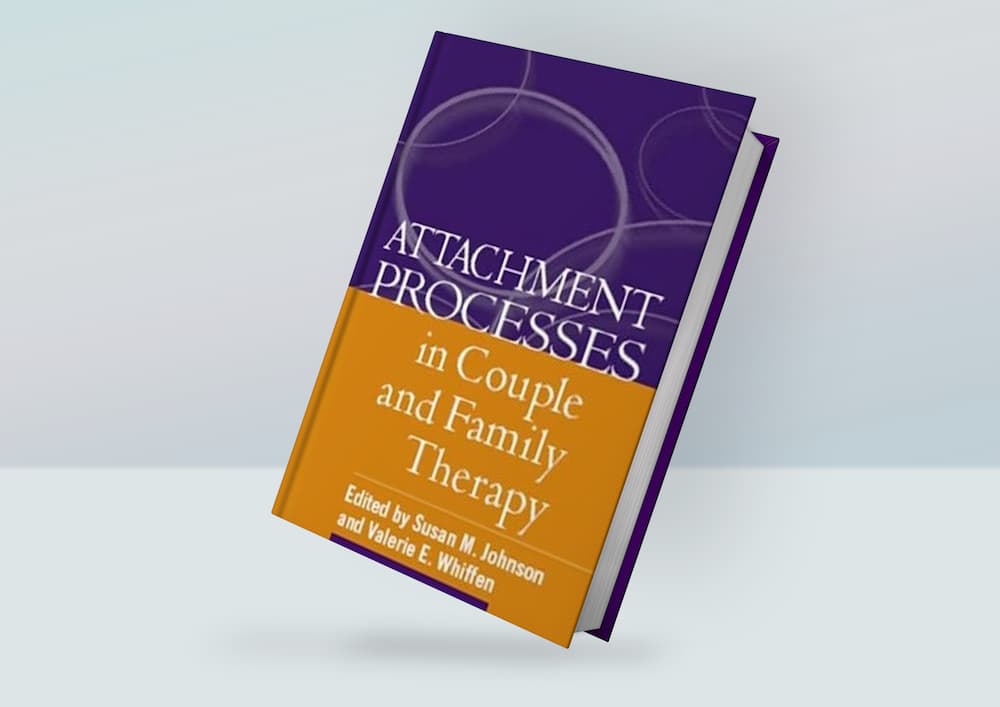
Title: Attachment Processes in Couple and Family Therapy
Editors: Susan M. Johnson and Valerie E. Whiffen
Publication Date: 2003
Genre: Non-fiction, Psychology, Psychotherapy, Couple and Family Therapy
Our ninth pick on the Hypnotes Best Book for Therapists list is a must-read for professionals who want to take their couples counseling skills to the next level. Contrary to the previous widespread idea that families are like machines, this book for therapists promotes the attachment theory and explains the patterns of family and couple relations.
“Attachment Processes in Couple and Family Therapy” is edited by Susan M. Johnson and Valerie E. Whiffen, both respected experts in the fields of couple and family therapy. The book explores the role of attachment theory in understanding and treating relational issues within couples and families. It aims to provide therapists, counselors, and students with a comprehensive understanding of attachment theory and its practical applications in couple and family therapy.
Therefore, it presents a detailed theoretical explanation for family therapy, which is very helpful for therapists wanting to expand their insight into this issue. Additionally, the book has an excellent narrative of applying this theory, to help counselors improve the efficiency of their sessions.
The book is divided into several sections that cover key aspects of attachment processes in couple and family therapy:
- Theoretical Foundations: This section provides an overview of attachment theory, its history, and its relevance to understanding human relationships. The authors discuss the core principles of attachment theory, such as the importance of secure attachment bonds, the influence of early attachment experiences on adult relationships, and the role of attachment processes in shaping emotional regulation and interpersonal dynamics.
- Assessment and Intervention: This section focuses on the practical applications of attachment theory in clinical settings. The authors present various assessment tools and therapeutic interventions that can help therapists identify and address attachment-related issues within couples and families. These include techniques for promoting secure attachment, enhancing emotional communication, and fostering resilience and healthy coping strategies.
- Specific Populations and Issues: The book also explores the implications of attachment theory for working with diverse populations and addressing specific relational challenges. This section includes chapters on topics such as attachment processes in stepfamilies, the impact of trauma on attachment bonds, and the role of attachment in understanding and treating infidelity.
- Integrative Approaches: The final section of the book discusses the integration of attachment theory with other therapeutic models and approaches, such as cognitive-behavioral therapy, emotionally focused therapy, and narrative therapy. The authors explore how these integrative approaches can enhance the effectiveness of couple and family therapy by addressing the underlying attachment dynamics that contribute to relational distress.
“Attachment Processes in Couple and Family Therapy” offers a comprehensive and in-depth examination of the role of attachment theory in understanding and treating relational issues in couples and families. The book is an invaluable resource for therapists, counselors, and students who are interested in learning more about attachment theory and its practical applications in couple and family therapy.
In this video, the author of the book Susan Johnson introduces attachment theory in practice.
See the book on Amazon
10 – The Developing Mind: How Relationships and the Brain Interact to Shape Who We Are – Daniel J. Siegel
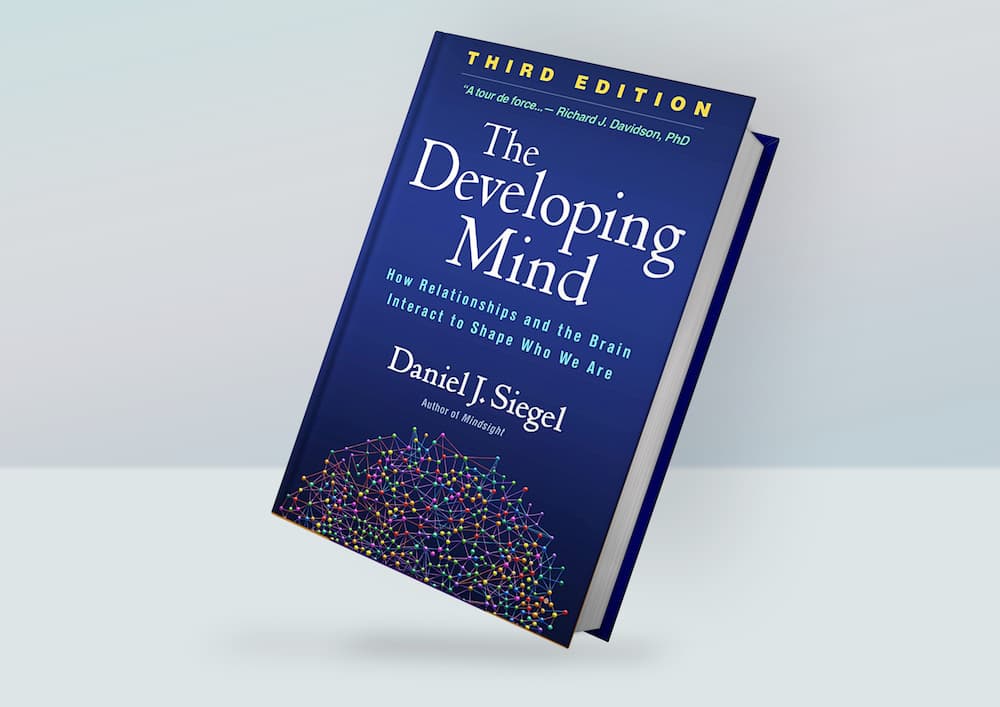
Title: The Developing Mind: How Relationships and the Brain Interact to Shape Who We Are
Author: Daniel J. Siegel
Publication Date: 1999 (First Edition)
Genre: Non-fiction, Psychology, Neuroscience, Interpersonal Neurobiology
“The Developing Mind: How Relationships and the Brain Interact to Shape Who We Are” is a groundbreaking book written by Dr. Daniel J. Siegel, a renowned psychiatrist, and expert in the field of interpersonal neurobiology. The tenth on our list, Hypnotes Best Books for Therapists, suggests that interpersonal relations influence our thoughts, feelings, and behaviors. The book explores the intricate interplay between the brain, relationships, and personal development, offering a comprehensive and innovative understanding of human behavior, emotional well-being, and mental health.
As stated by Daniel J Siegel, the human mind, and its procedural functions such as thinking, remembering, and creating emotions are all affected by the nature of our relations with other people.
Key concepts and themes discussed in the book include:
- Interpersonal neurobiology: Siegel introduces the interdisciplinary field of interpersonal neurobiology, which combines insights from neuroscience, psychology, and social sciences to study the connections between the brain, mind, and relationships. He emphasizes the importance of understanding the brain’s role in shaping our sense of self, our emotional experiences, and our interactions with others.
- The social brain: The book explores the idea that the human brain is fundamentally social, designed to form and maintain relationships. Siegel discusses the neurobiological basis of attachment, empathy, and social cognition, showing how these processes contribute to our ability to connect with others and navigate complex social environments.
- Brain development and plasticity: Siegel examines the process of brain development, highlighting the crucial role of early experiences in shaping the brain’s architecture and function. He explains how the brain’s remarkable plasticity allows it to adapt and change in response to environmental influences, both positive and negative.
- The role of relationships in mental health: The book emphasizes the importance of secure attachment and supportive relationships in promoting mental health and well-being. Siegel discusses the impact of attachment experiences on the brain’s development, as well as the role of relational trauma in the etiology of various mental health disorders, such as anxiety, depression, and borderline personality disorder.
- Mindfulness and integration: Siegel introduces the concept of “mindsight,” which refers to our ability to reflect on our own mental processes and develop self-awareness. He advocates for the practice of mindfulness and the cultivation of integration, which he defines as the harmonious functioning of the various aspects of our brain, mind, and relationships. Siegel argues that integration is key to emotional well-being, resilience, and personal growth.
“The Developing Mind” is a seminal work that has had a profound impact on the fields of psychology, neuroscience, and mental health. The book offers a unique and compelling perspective on the connections between the brain, relationships, and human development, providing valuable insights for therapists, educators, and anyone interested in understanding the complex interplay between biology and experience in shaping who we are.
In this video, Dr. Daniel J. Siegel introduces ”How Our Relationships Shape Us”.
See the book on Amazon.
11 – Adult Attachment and Couple Psychotherapy: The ‘Secure Base’ in Practice and Research – Christopher Clulow
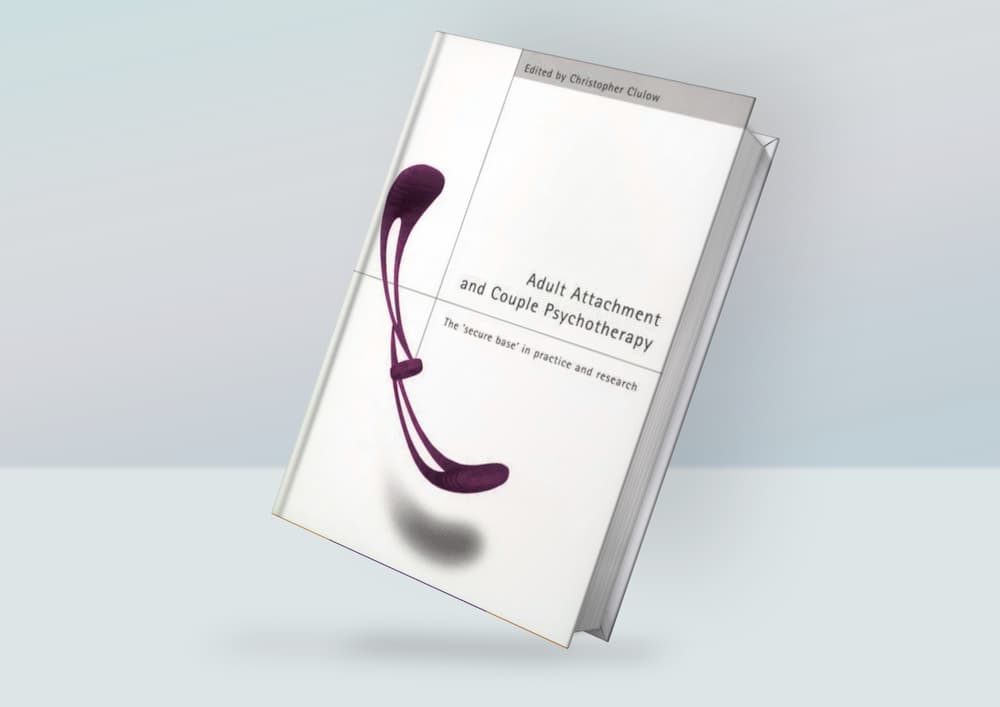
Title: Adult Attachment and Couple Psychotherapy: The ‘Secure Base’ in Practice and Research
Author: Christopher Clulow
Publication Date: 2000
Genre: Non-fiction, Psychology, Psychotherapy, Attachment Theory, Couple Therapy
The eleventh recommendation from the Hypnotes Best Books for Therapists guide is Adult Attachment and Couple Psychotherapy: The ‘Secure Base’ in Practice and Research by Christopher Clulow, a leading expert in the field of couple psychotherapy and attachment theory. Clulow presents a detailed investigation into family and couple relations based on the attachment theory. The book explores the application of attachment theory to couple psychotherapy, providing therapists, researchers, and students with valuable insights into the role of attachment in adult relationships and the therapeutic process.
Divided into three sections, the first section explores the secure and insecure attachment of couples. Part two is focused on a thorough explanation of the attachment theory and how it is applied to the cases. The final section provides principal training and practice methods that can be utilized for couples therapy and counseling.
Key concepts and themes discussed in the book include:
- Adult attachment: Clulow provides an overview of attachment theory, focusing on its relevance to adult relationships. He discusses the different attachment styles (secure, anxious, and avoidant) and how these styles influence individuals’ emotional regulation, communication patterns, and relationship dynamics.
- The ‘secure base’ concept: Drawing on John Bowlby’s attachment theory, Clulow introduces the concept of the ‘secure base’ in adult relationships. A secure base refers to a stable and supportive relationship that allows individuals to explore their emotions, thoughts, and experiences without fear of rejection or judgment. Clulow argues that a secure base is essential for emotional well-being and the development of healthy, satisfying relationships.
- Attachment and couple psychotherapy: The book delves into the practical implications of attachment theory for couple psychotherapy. Clulow offers guidance on how therapists can assess attachment styles, identify attachment-related issues, and tailor interventions to address these issues within the context of couple therapy. He emphasizes the importance of creating a therapeutic environment that promotes a secure base for both partners, enabling them to explore and resolve their relational challenges.
- Research and clinical applications: Clulow presents a range of research findings on adult attachment and couple psychotherapy, highlighting the empirical support for the effectiveness of attachment-based interventions. He also provides case examples and clinical vignettes to illustrate the application of attachment concepts in real-world therapeutic settings.
- Future directions: The book concludes with a discussion of the future directions for research and practice in the field of adult attachment and couple psychotherapy. Clulow highlights the need for further investigation into the mechanisms underlying attachment-based interventions and the development of more refined assessment tools and treatment protocols.
“Adult Attachment and Couple Psychotherapy: The ‘Secure Base’ in Practice and Research” offers a comprehensive and in-depth exploration of the role of attachment theory in understanding and treating relational issues in couples. The book is an invaluable resource for therapists, counselors, researchers, and students who are interested in learning more about the application of attachment theory to couple psychotherapy and the development of more effective therapeutic interventions for distressed couples.
In this video, Dr. Christopher Clulow introduces a detailed explication of the application of attachment theory to couple psychotherapy.
See the book on Amazon.
12 – Motivational Interviewing: Helping People Change – William R. Miller and Stephen Rollnick
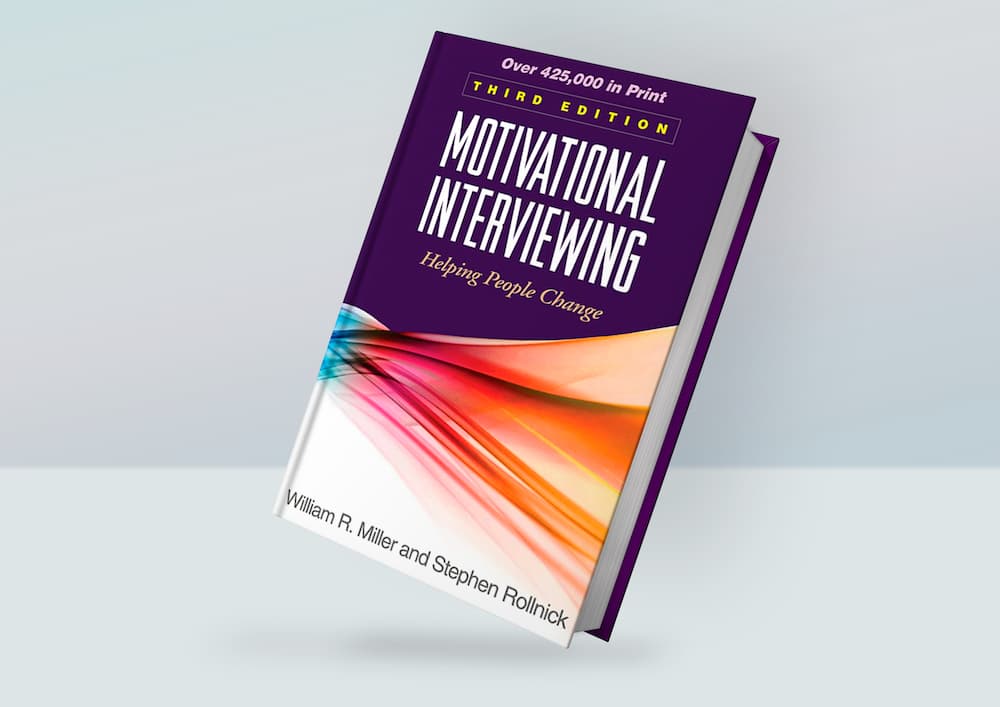
Title: Motivational Interviewing: Helping People Change
Authors: William R. Miller and Stephen Rollnick
Publication Date: 1991 (First Edition); 2012 (Third Edition)
Genre: Non-fiction, Psychology, Psychotherapy, Counseling, Behavior Change
“Motivational Interviewing: Helping People Change” is a book written by William R. Miller and Stephen Rollnick, two leading experts in the field of motivational interviewing (MI) and behavior change. It is a guide for mental health professionals and other healthcare providers who want to help their clients make positive changes in their lives, such as stopping harmful behaviors or adopting healthier habits.
The book is based on the principle of motivational interviewing, which is a collaborative approach to counseling that focuses on helping clients explore and resolve their ambivalence about change. The authors describe four key principles of motivational interviewing: expressing empathy, developing discrepancy, rolling with resistance, and supporting self-efficacy.
The book provides practical guidance on how to use motivational interviewing techniques in a variety of settings, such as addiction treatment, primary care, and mental health services. It includes case studies and sample dialogues to help readers understand how to apply the principles of motivational interviewing in real-life situations.
Key concepts and themes explored in the book include:
- The spirit of motivational interviewing: Miller and Rollnick emphasize the importance of adopting a non-judgmental, collaborative, and empathic attitude towards clients. This supportive and respectful therapeutic stance fosters a strong therapeutic alliance and creates a safe environment for clients to explore their thoughts, feelings, and values related to the target behavior.
- The four processes of motivational interviewing: The authors outline the four main processes involved in MI: engaging, focusing, evoking, and planning. Engaging involves establishing a strong therapeutic relationship; focusing entails clarifying the target behavior and setting goals for change; evoking involves eliciting clients’ reasons for change and strengthening their motivation; and planning involves developing a practical action plan for change.
- Core skills and techniques: Miller and Rollnick introduce the core skills and techniques of motivational interviewing, such as open-ended questions, affirmations, reflections, and summaries (collectively referred to as OARS). These communication strategies facilitate an empathic and collaborative dialogue that supports clients in exploring their ambivalence, building self-efficacy, and developing intrinsic motivation for change.
- Dealing with resistance and sustain talk: The authors discuss strategies for managing clients’ resistance and sustain talk, which refers to clients’ statements that support the status quo or argue against change. They emphasize the importance of avoiding confrontations and instead adopting a “rolling with resistance” approach that fosters clients’ autonomy and supports them in finding their own solutions to their problems.
- Applications and evidence base: Miller and Rollnick provide numerous case examples and clinical vignettes to illustrate the application of MI in various settings and populations, such as substance abuse treatment, health promotion, mental health, and criminal justice. They also review the extensive evidence base supporting the effectiveness of MI in promoting behavior change across a wide range of issues and populations.
Overall, “Motivational Interviewing: Helping People Change” is a valuable resource for healthcare professionals who want to learn how to effectively motivate their clients to make positive changes in their lives.
In this video, author William R. Miller introduces motivational interviewing.
See the book on Amazon.
Further Recommendations
Here are some more recommendations for therapists seeking to expand their knowledge and understanding of various therapeutic approaches and topics:
- “Emotion-Focused Therapy: Coaching Clients to Work Through Their Feelings” by Leslie S. Greenberg
- “Radical Acceptance: Embracing Your Life with the Heart of a Buddha” by Tara Brach
- “Schema Therapy: A Practitioner’s Guide” by Jeffrey E. Young, Janet S. Klosko, and Marjorie E. Weishaar
- “The Mindful Way through Depression: Freeing Yourself from Chronic Unhappiness” by Mark Williams, John Teasdale, Zindel Segal, and Jon Kabat-Zinn
- “In the Realm of Hungry Ghosts: Close Encounters with Addiction” by Gabor Maté
- “The Polyvagal Theory: Neurophysiological Foundations of Emotions, Attachment, Communication, and Self-regulation” by Stephen W. Porges
- “The Happiness Trap: How to Stop Struggling and Start Living” by Russ Harris
- “Cognitive Therapy of Depression” by Aaron T. Beck, A. John Rush, Brian F. Shaw, and Gary Emery
- “The Body Keeps the Score: Brain, Mind, and Body in the Healing of Trauma” by Bessel van der Kolk
- “Attachment in Psychotherapy” by David J. Wallin
- “Trauma and Recovery: The Aftermath of Violence – From Domestic Abuse to Political Terror” by Judith Lewis Herman
- “Man’s Search for Meaning” by Viktor E. Frankl
- “The Drama of the Gifted Child: The Search for the True Self” by Alice Miller
- “Hold Me Tight: Seven Conversations for a Lifetime of Love” by Dr. Sue Johnson
- “Mind Over Mood: Change How You Feel by Changing the Way You Think” by Dennis Greenberger and Christine A. Padesky
- “Daring Greatly: How the Courage to Be Vulnerable Transforms the Way We Live, Love, Parent, and Lead” by Brené Brown
These books delve into various therapeutic modalities and perspectives, such as emotion-focused therapy, mindfulness-based approaches, schema therapy, motivational interviewing, and the polyvagal theory. They also cover topics related to mental health, addiction, happiness, and personal growth, offering valuable insights for therapists to incorporate into their practice.
Bottom Line

Counseling and therapy have been regaining popularity among people as a key to solving their problems and distress as drug treatments are becoming a solution for more serious cases. Therefore, therapists should adopt a stable routine to expand their knowledge and experience by following the best books for therapists, 12 of which are presented above.
Starting with the basics of psychotherapy both for theory and application, the beginning therapists can improve their competence through these books for therapists or free online training for therapists. These books for therapists have been authored by either the pioneers or the prominent experts of the field, and hence, they offer a detailed insight into counseling.
Additionally, this selection of among the best books for therapists is prepared to provide a balanced flow of theoretical and empirical knowledge that will bear immense contribution to the professional development of the field experts to upgrade their work efficiency. Additionally, most of these books for therapists are also available as the best audiobooks for therapists, which can be excellent company during your jogging or driving.
If you have time, you can check out our best podcast recommendations for therapists. and best websites for therapists.

